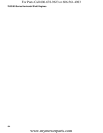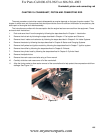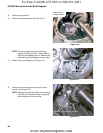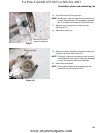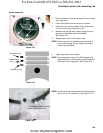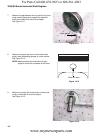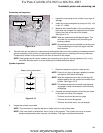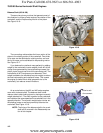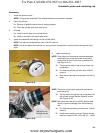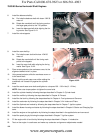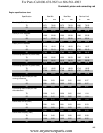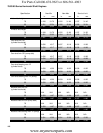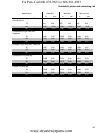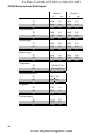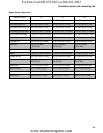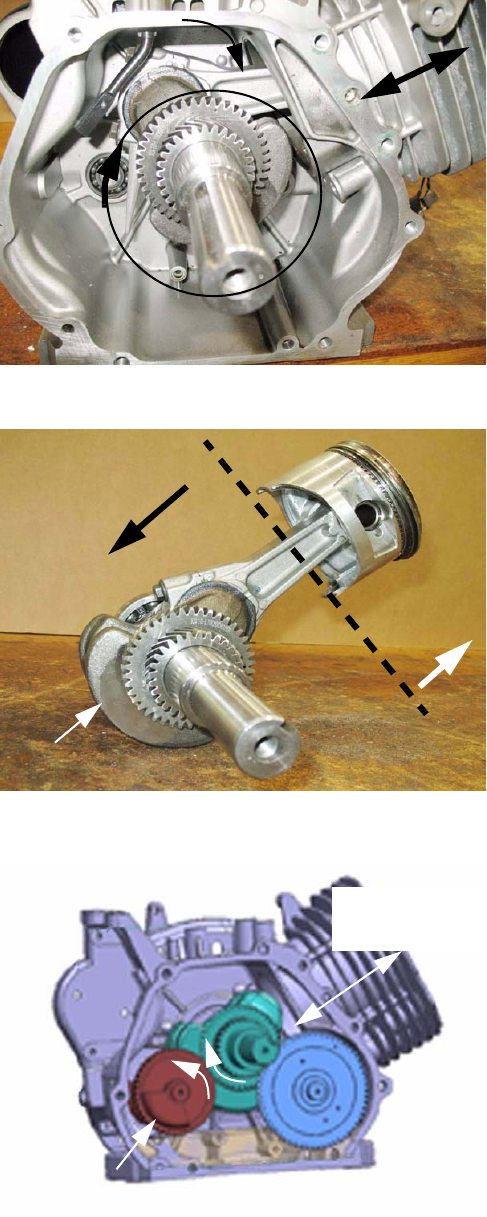
78/83/90 Series Horizontal Shaft Engines
112
Balance Shaft (483 & 490)
There are two primary motions that generate most of
the vibrations in single-cylinder engines; the rotation of the
crankshaft, and the reciprocating motion of the piston.
See Figure 10.16.
The connecting rod translates the linear motion of the
piston to the rotating motion of the crankshaft. Two-thirds
of its mass can be attributed to rotating motion, and one-
third of its mass can be attributed to reciprocating motion.
See Figure 10.17.
If you balance the rotational mass perfectly by adding
weight to the crankshaft counter-weights, there will still be
a large force generated by the reciprocating masses (the
piston, piston pin and one-third of the connecting rod). The
crankshafts on MTD engines are not balanced. Extra
weight is added to the crankshaft counter-weight to reduce
the total reciprocating and rotational forces. This causes
the engine to shake side to side (perpendicular to the
crankshaft), but reduces overall vibrations.
As an extra feature, the 483 and 490 series engines
come with a balance shaft
. The balance shaft further
reduces side to side shaking forces
by having an eccentric
weight attached to it
. The shaft is geared to the crankshaft
and rotates at the same speed as the crankshaft, but in the
opposite direction.
The eccentric weight helps counter act
the shaking forces
as well as dynamically balances the
crankshaft
. See Figure 10.18.
NOTE: The timing of the balance shaft to the crank-
shaft will be covered in the Reassembly sec-
tion of this chapter.
Figure 10.16
Piston travel
Crankshaft
travel
Connecting rod
Figure 10.17
Reciprocating
mass
Rotating mass
counter-weight
Figure 10.18
Balance shaft
Piston’s axis
of movement
For Parts Call 606-678-9623 or 606-561-4983
www.mymowerparts.com



